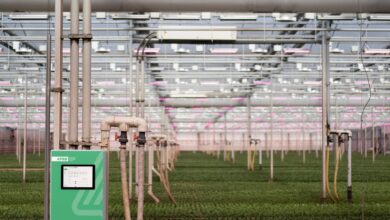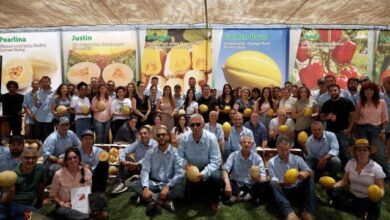david kenigsbuch and susan lurie, department of postharvest science, volcani center
introduction
cabbage production is problematic in hot climates, since it grows best in a temperature range of 16 to 18 °c. israel has a climate with a wet, mild winter and a hot dry summer. the best period for growing cabbage is therefore in the fall and winter. cabbage grown at this time can be stored for a number of months, but to allow for year round supply, cultivation and storage is necessary in the spring and summer months. there are many different cultivars of cabbage that have been developed for both fresh consumption and for processing, and some have better yields when grown in hot weather than others. the growing season will affect many quality parameters of the cabbage including head size density, ratio of protein to fiber, and concentration of glucosinolates. there are also differences among cultivars with regard to storage potential.
cabbages are commonly stored at a low temperature, and while this retards the loss of quality, it does not fully stop senescence. in storage, cabbage is prone to postharvest weight loss and shriveling, yellowing and fungal infections. among these pathogens, b. cinerea is the prevalent fungus which causes the worst damage to cabbages in storage. a major physiological storage disorder is black spot. this disorder is also called pepper-spotting, grey speck and black speck. the damage caused by black spot and b. cinerea can be reduced using controlled atmosphere (ca). ca (2-3% 02, and 5-6% co2) storage and can extend cabbage storage life, delay yellowing and maintain good quality characteristics. we have examined a number of cabbage cultivars with the purpose of finding which cultivars are better suited for summer production, and what problems arise during storage.
methods
six f1 hybrid cultivars were planted in open fields at the beginning of april and harvested in june when the heads reached 1.5 kg. the heads were stored for four months in controlled atmosphere chambers at 1 °c±0.5. storage atmosphere was 2-3% o2, 5-6% co2. there were four 18 kg boxes for each cultivar. at the end of storage, the vegetables were examined for weight loss, the number of discolored leaves removed, decay development, and black spot appearance. decay and black spot were rated on an index of 1 to 5, with 1 being nonappearance of the problem, and 5 being decay or black spot throughout the cabbage head. the results were analyzed by the tukey-kramer method using jmp 7.0.1 platform (sas institute, inc.) to determine significant differences at the level of p=0.5.
results
there were differences in quality indices among the six cabbage cultivars after removal from storage (figure 1). weight loss did not vary a great deal among the different cultivars. although the cultivar graphala had the highest weight loss (5.9%) after four months of storage, it did not differ significantly from the other cultivars. the number of discolored leaves on the outside of the cabbage that needed removal at the end of storage were generally 3 to 4, with the exception of the cultivars graphala and fesco, where 5.6 and 8 leaves were removed, respectively. decay development differed; the lowest decay developed in the cultivars cheers and proctor cabbages, and the highest in graphala. with regard to the physiological disorder, black spot (picture 1), the cultivars burbon, cheers and proctor had almost no development of black spot, while graphala and fresco had above an index of 2. healthy cabbage heads had no appearance of black spot or of decay (picture 2).
in conclusion, cheers and proctor cabbage cultivars grown in spring and stored over the summer in controlled atmosphere, stored better than the other cabbage cultivars examined.
figure 1. quality of 6 white cabbage cultivars after storage in controlled atmosphere for four months. different letters for each attribute indicate statistical differences at p=0.5.
picture 1. the appearance of black spot on cabbage leaves.
picture 2. healthy cabbage heads after storage and removal of outer leaves.





